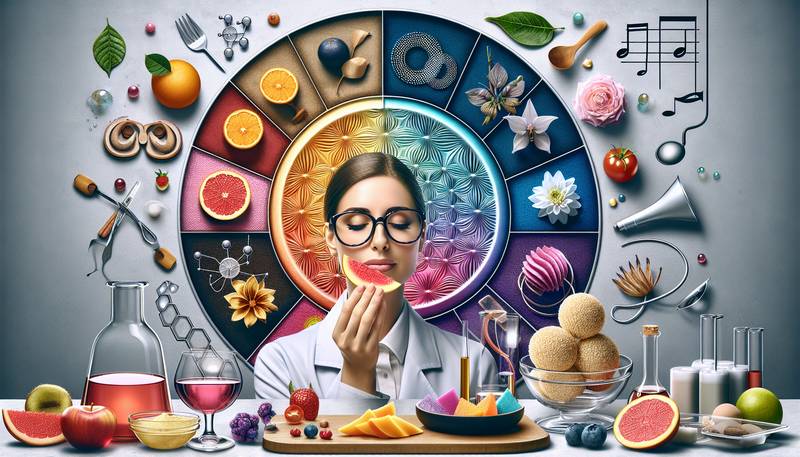The Role of Sensory Science in Food Innovation

Understanding Sensory ScienceEvery bite of food tells a story, but some plots are thicker than others. Sensory science is like the detective of the culinary world—it investigates how our senses affect our food experience. This field examines the five senses (sorry, “sixth sense,” maybe in the next blockbuster film), focusing on how taste, smell, sight, sound, and touch influence our perception of food. Think of sensory scientists as the “taste buds” of the research community, working tirelessly to improve the culinary delights that grace our plates.The Five Senses of FoodTo truly appreciate what sensory science brings to the table, it's vital to explore the five senses, although the “taste” of food is not the only consideration. - Taste: Always at the forefront, this sense involves the basic flavors: sweet, salty, sour, bitter, and umami. Who knew that a splash of soy sauce could turn a dish from drab to fab?
- Smell: Here’s where things get aromatic. The olfactory system is a game-changer; a whiff of freshly baked cookies can make even the most hardened of hearts melt. Who can resist that smell?
- Sight: If we eat with our eyes first, then involve a little color theory! An Instagrammable plate not only looks good but also can make food taste better (even if it’s just plain broccoli).
- Sound: Ever bitten into a crisp apple and heard that delightful crunch? It's like nature’s way of giving you a high-five to your taste buds.
- Touch: The texture of food can make or break a meal. From fluffy soufflés to the gritty aftermath of a poorly cooked soufflé—texture matters!
The Science Behind the FlavorWhen food innovators want to create something remarkable, they don’t just throw random ingredients into a blender and hope for the best (though, admit it, you’ve tried). They lean on sensory science to understand what consumers crave. This science analyzes not only the components of food but also how we interact with it.Some might scoff at the notion that science plays a role in food. But consider this: if scientists can figure out how to make a pizza that makes the cheese stretch like a yoga instructor, it’s not just an art; it's a well-crafted science! Food Innovation in a Competitive PaletteThe food industry isn’t just about creating mouthwatering, Instagram-worthy dishes; it’s a battleground where innovation reigns supreme. Chefs and food companies continuously experiment with flavors, textures, and even the way their food looks to stay ahead. They’re the culinary equivalent of superheroes, constantly seeking the next “superfood” or trend that consumers will gobble up.Enter sensory science. This is where the magic happens. By conducting research, taste tests, and sensory evaluations, innovators can fine-tune their creations. It’s almost like they have a superpower to decipher what makes our taste buds dance with delight. Some trends that have emerged from sensory science include:- Plant-based alternatives that might convince even the staunchest meat-lover to reconsider.
- Flavor pairings that create unexpected combinations. Who knew chocolate and chili could be a match made in culinary heaven?
- Textural contrasts that keep meals exciting. A crunchy topping on a creamy soup? Less boring, more roaring!
Challenges Facing the Food InnovatorsDespite the tantalizing prospects, challenges abound. One common hurdle is balancing consumer expectations with sustainability. People want delicious, visually appealing food, but also want to feel good about their choices. As if that weren’t enough, fulfilling dietary restrictions and preferences can turn a simple dish into a multi-layered puzzle. Got a gluten-sensitive friend? No problem—just make a gluten-free version! But wait, what if they also love dairy? Now you've got a cheese-less pizza to conjure up. It's like creating a dish that could satisfy both a food critic and a toddler at the same time.A Flavorful FutureAs the journey of food innovation continues, sensory science will be the guiding light, much like a lighthouse for lost culinary ships. Emerging technologies—such as molecular gastronomy—will further expand the boundaries of taste and flavor. With each innovation, the food landscape will become richer, offering experiences that tantalize the senses and tickle the soul. Maybe one day, we’ll reach a point where food can communicate with our senses independently—“Hey, you! Yes, you! Bite me!” Creativity meets science, and together, they concoct an adventure that feeds the body, mind, and, most importantly, the taste buds. Embrace the wild ride of food innovation because, in this journey, the only limit is your imagination (and perhaps your pantry).
|
|







